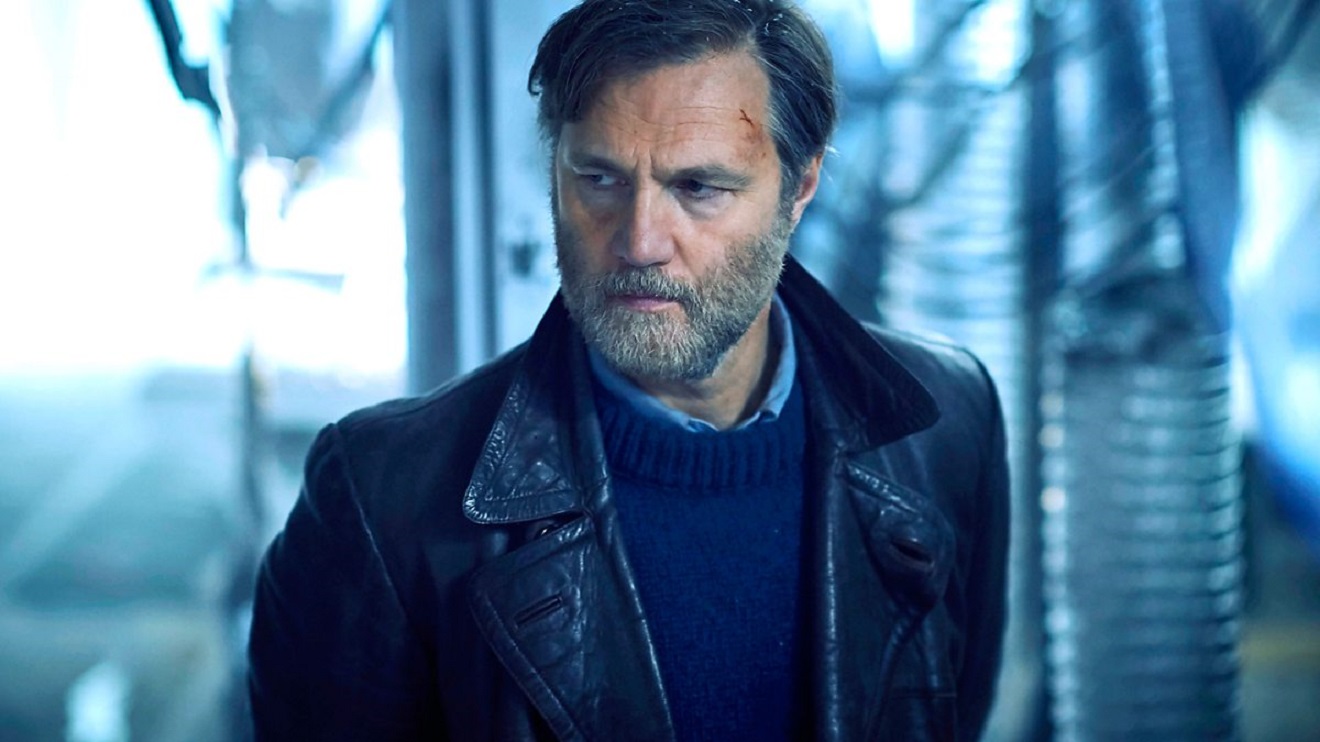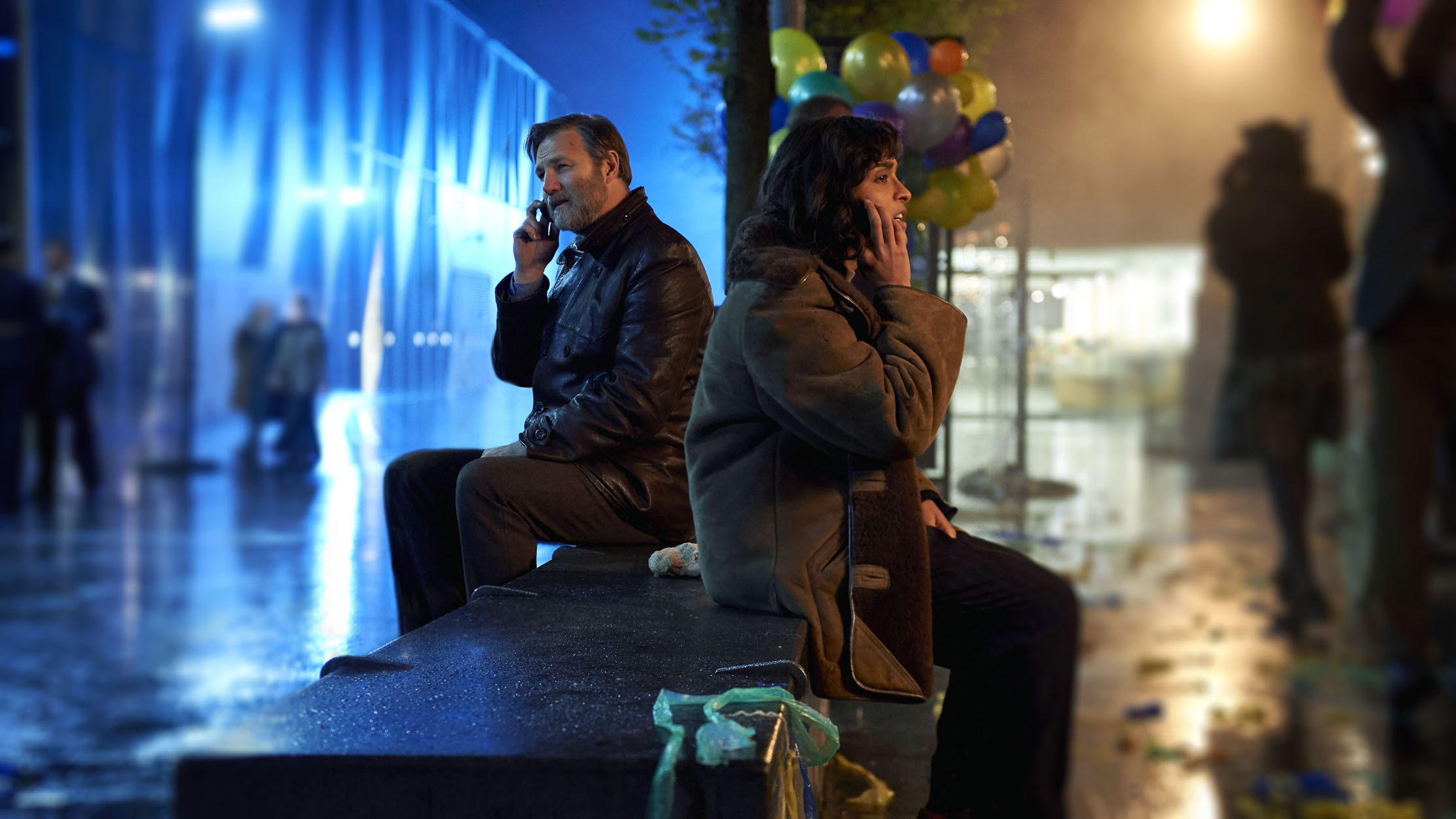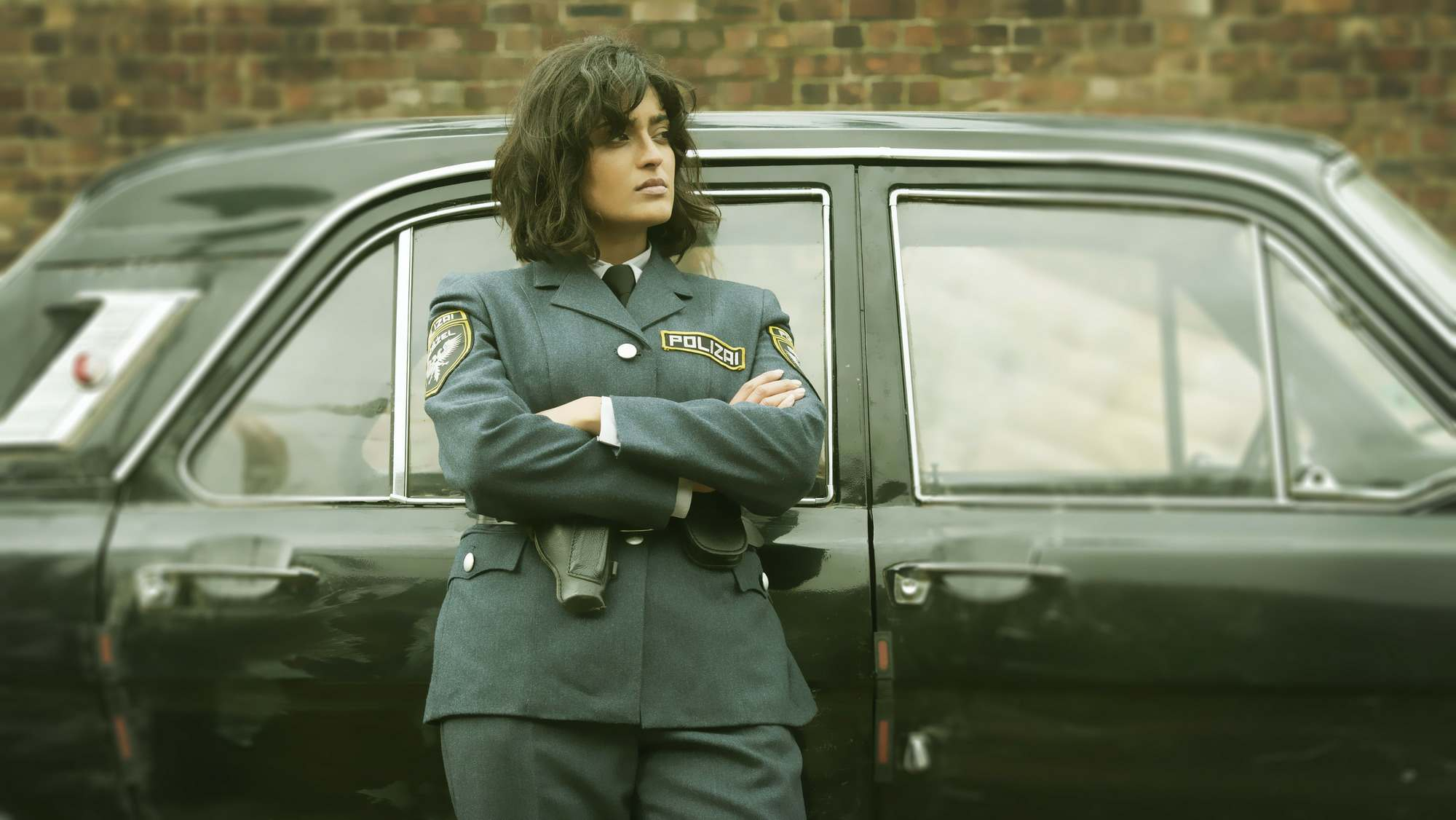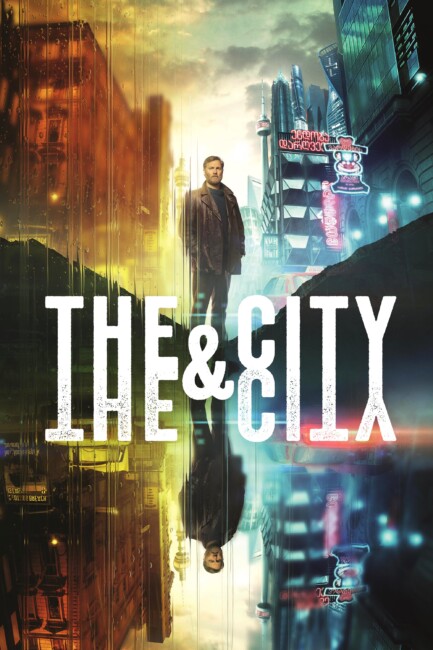Crew
Director – Tom Shankland, Teleplay – Tony Grisoni, Based on the Novel by China Mieville, Producer – Betsan Morris Evans, Photography – Stephan Pehrsson, Music – Dominik Scherrer, Visual Effects – The Flying Colour Company, Special Effects Supervisor – Ben Ashmore, Production Design – Simon Rogers. Production Company – Mammoth Screen/BBC.
Cast
David Morrissey (Inspector Tyador Borlu), Mandeep Dhillon (Constable Lizbyet Corwi), Lara Pulver (Katrynia Perla), Maria Schrader (Quissima Dhatt), Christian Camargo (David Bowden), Ron Cook (Commissar Gadlem), Danny Webb (Major Yorj Syedr), Paprika Steen (Professor Mona Ul-Nadi), Marama Corlett (Rebecca), Robert Firth (Mike Gorse), Andrea Deck (Mahalia Geary), Corey Johnson (Mr Geary), Morfydd Clark (Yolanda Stark), Michael Moshonov (Aikham), Debora Weston (Mrs Geary)
Plot
Beszel and Ul Qoma are two cities that exist in the same geographic space, each acting as their own country with their own culture. The borders of either city sometimes even divide the same street or square. As a result, residents have learned since birth to Unsee the other country – to turn away and ignore whatever intrudes. Breach is a special police force that exists to police the borders between the two countries and ensure that integrity is strictly maintained. Tyador Borlu, an inspector on the regular Beszel police force, is assigned to investigate the murder of Mahalia Geary, a foreign exchange student in Ul Qoma whose body was found dumped across the border in Beszel. As Borlu investigates, necessitating that he cross the borders over into Ul Qoma, he comes to discover that the dead girl was a believer in Orciny, the theory about a mythical third city that exists in the interstices of the other two that was put forward by the radical academic David Bowden. Borlu’s wife Katrynia was a follower of Bowden and obsessed with Orciny. In investigating, Borlu becomes certain that he can solve the mystery of her disappearance.
China Mieville is one my most pleasurable reading finds in the last few years. Mieville first appeared with King Rat (1992) and went onto the amazing Perdido Street Station (2000) set in the fantasy world of New Crobuzon, which Mieville has visited in two subsequent works; the Young Adult Un Lun Dun (2007); The City & the City (2009); Kraken (2010); and Railsea (2012), a retelling of Moby Dick (1851) involving hunting giant moles in a post-holocaust future. That is not counting his writing several stories for DC Comics, as well as several books about Marxism (Mieville is an avowed socialist and stood for the Socialist Workers Party in the 2001 British election). His books frequently hop genres, rework familiar tropes into something new – he has visited everything from Young Adult to space opera, epic fantasy, urban fantasy, Western and detective fiction (as here). Mieville even coined the term New Weird to describe his fiction, which delights in transcending and redefining the genres he dabbles in. He was won multiple awards, including the science-fiction community’s Hugo, Nebula, Arthur C. Clarke and Philip K. Dick Awards.
This is a tv mini-series adaptation of The City & The City made by the BBC in four one-hour episodes. China Mieville has the role of consultant, while the script is delivered by regular Terry Gilliam writer Tony Grisoni. The mini-series is directed by Tom Shankland who has delivered solid and above average work on British tv series/mini-series such as The Fades (2011), Dirk Gently (2012), Ripper Street (2012-6) and The Missing (2014-6), as well as several ventures to the US to direct episodes of House of Cards (2013-8), The Leftovers (2014-7), Luke Cage (2016-8), Iron Fist (2017-8) and The Defenders (2017), while he had also directed the serial killer thriller WΔZ (2007) and the evil children film The Children (2008).

China Mieville is not an easy writer to film. His works come filled with exotic creatures and are about alien methods of understanding. Try and think about how you’d make a film of Embassytown – alien creatures with two mouths that can only be communicated with by humans that have been mentally adapted to talk in tandem where the story is about how the aliens learn to create metaphors and tell lies; or Perdido Street Station, probably his most outrightly visual work, with its menagerie of hawkmen, giant interdimensional spiders, machine gestalts and a love affair between a human and an insect woman.
The City & the City is the most filmable China Mieville work in the sense that the story is a regular police procedural and takes place in terrestrial places and features no exotic creatures. At least that’s how it appears on the face of it. When you look a little closer, the world the book takes place in presents considerable problems cinematically. How the heck does one visually present the idea of a regular city that looks no different to foreigners but to those who live there is two different countries separated by an invisible line in the street or dividing a square where the residents have to Unsee the other side of the division?
To their credit, the BBC production design team have come up with a visual scheme where the two cities – in fact, no more than the very British locations of Manchester and Liverpool – are different in look. Beszel is like a crowded rundown East European city where the technology is dated and the lighting schemes render everything in yellow; Ul Qoma is all ultra-modern hotels and high-rises where the colour schemes are red and blue. Tom Shankland also uses the cinematographic effect of leaving the edges of the frame out of focus, while the Unseen areas of the city are blurred out.

On the other hand, the mini-series bluntens China Mieville. Certainly, it follows the general path of the book’s plot; it just gives some parts more emphasis than others – aspects like the rise of populist politicians in Beszel; the secret deals with the American corporation to exploit Orciny. There is the addition of the character of Borlu’s missing wife (played by Sara Pulver), along with the indication that she disappeared in Orciny, who does not feature in the book. Borlu’s assistant Corwi and his opposite number Dhatt both get far more expanded roles over the book – Dhatt is recast as a woman and we get glimpses into her home life, while Corwi gets more to do and the addition of a credibility-stretching left field twist near the end.
Tony Grisoni has reconstructed the elements of the book far more along the lines of a standard hard-boiled detective thriller. There are all the classic elements of the detective thriller genre – the murdered girl; the detective whose world-weary voiceover opens every episode; his being haunted by the past and a missing wife who is connected to the investigation; his obsession having him suspended from the force; his cautious cooperation with someone on the opposite side of the fence; the uncovering of corruption that involves politicians and high-ups in the police department.
The mini-series also grates for anyone familiar with the China Mieville book. (Equally, you suspect that anyone coming to it without having read the book would soon end up puzzled). There are times when you feel that Tom Shankland gets the essence of the book – scenes that show David Morrissey and Mandeep Dhillon sitting making phonecalls or driving in either country unaware they are doing so right alongside the other. There is a great scene where a young girl accidentally sends a spinner toy across the borderline in the square and everyone freezes before turning away and pretending that nothing happened. The first episode climaxes with the scene where David Morrissey receives a tip-off from an anonymous caller before realising the phone booth is right outside his apartment but situated in Ul Qoma and that it must be in Breach. The best scene is the one where Morrissey follows the assassin from the borderpoint by watching their figure run though Ul Qoma reflected on windows and vehicles before turning to deliberately invoke Breach by shooting across the border.

Equally, there are times that you feel that the mini-series misses everything by a mile. One of these occasions is the casting of Mandeep Dhillon, an Indian actress born in England, who has a reasonable number of comedy and acting credits to her name. For whatever reason, the decision was made firstly to expand Corwi from the minor role of the sidekick in the book to the point where Dhillon is now the secondary-billed lead of the tv series. Secondly, there was the disastrous decision to have Dhillon play the part like an incredibly bad caricature of a Cockney waif from some Dickensian drama – “Cor, give us a break, guv”-type lines – and to pepper her dialogue with a string of profanity in the opening minutes of the show. Both the awfulness of the performance and what you hear coming out of her mouth leaves you doing a “WTF is going on here?” double-take. It completely drowns out the details about the two cities and the murder investigation, which is something you feel like you should be concentrating on in these scenes.
And then there are downrightly baffling directorial effects like a scene where David Morrissey is punched out in a bar and for no particular reason we see eight balls circling around his head as he falls. Not to mention the ending [PLOT SPOILERS] where a wounded David Morrissey sees visions of Lara Pulver calling from the afterlife and his voiceover suggestion that that is the real Orciny, which seems about a complete betrayal and reversal of everything that China Mieville does with his conclusion.
Trailer here


